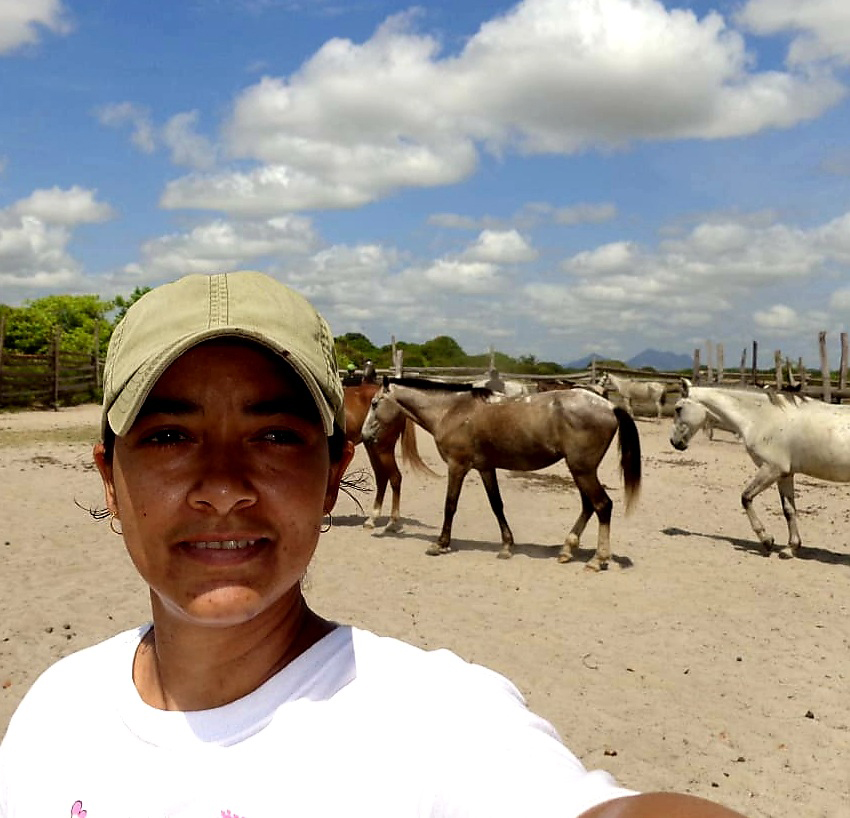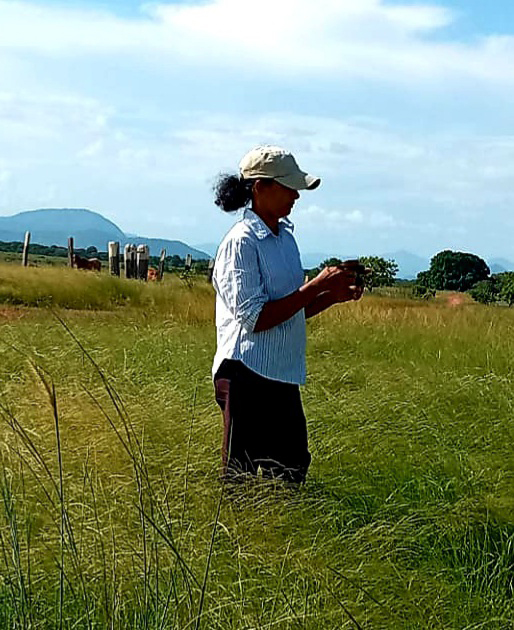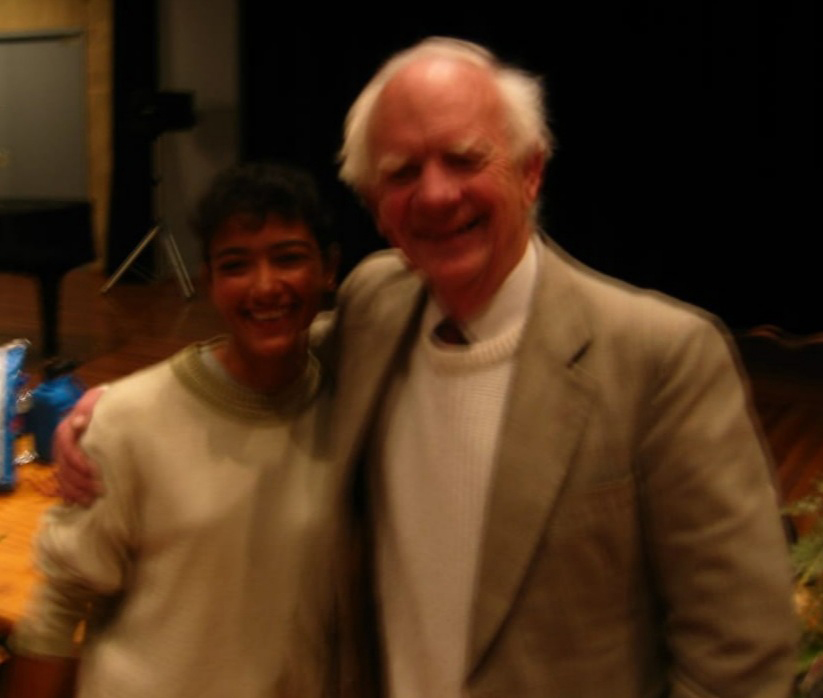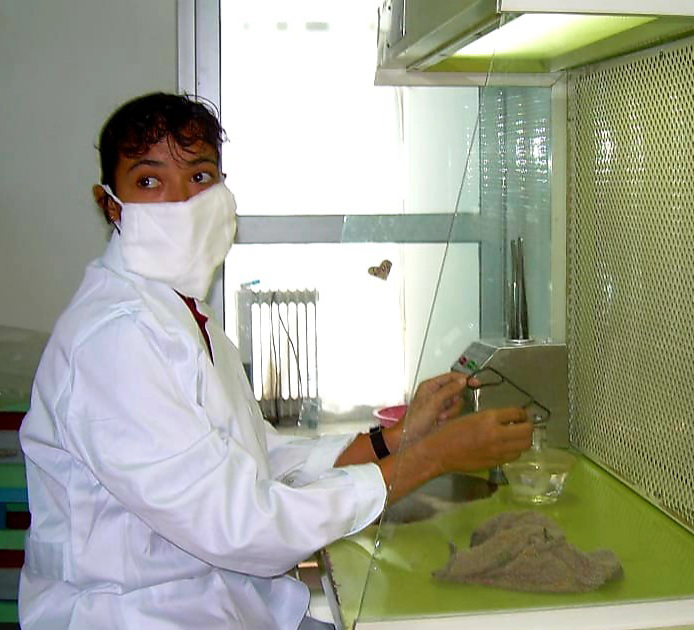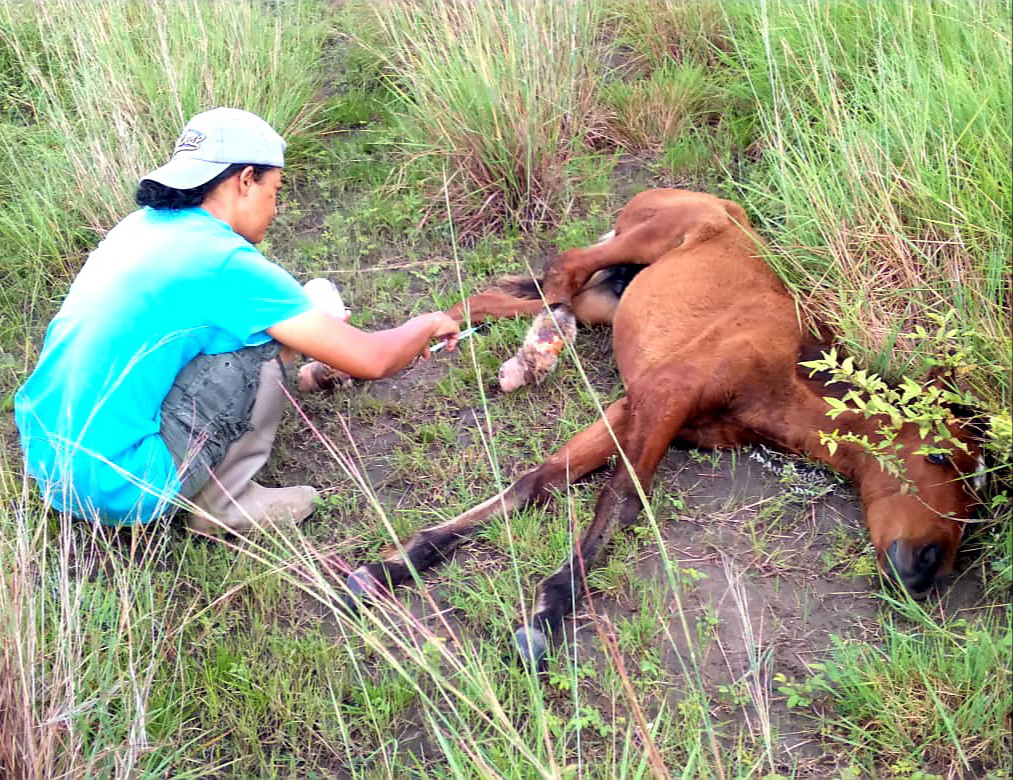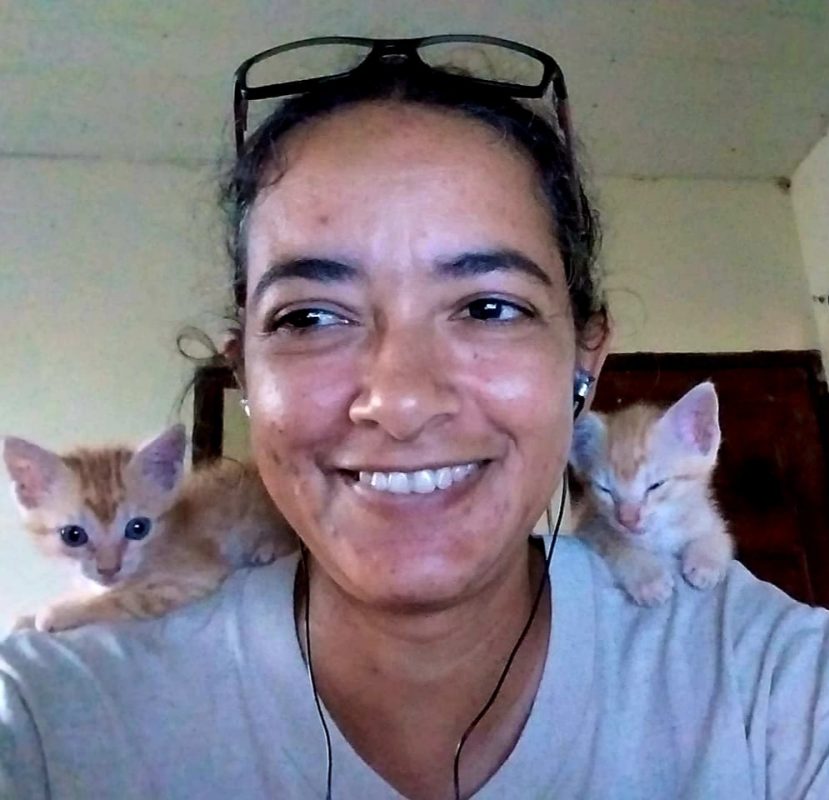City-born and raised, multi-disciplined agripreneur Yolanda Vasconcellos is living her dream of working with both livestock and crops in the wide open spaces of Santa Fe Farms in Central Rupununi. She is now sharing the farm experience as an agricultural tourism product to Guyana and the rest of the world.
“I enjoy very much whichever aspect of agriculture I do, whether it is with crops or animals or with both. My next project is to get into permaculture – an approach to the management of land. You can marry that approach with agriculture because it allows for merging of food production with natural ecosystems. I want to embark on that soon and produce in a permaculture setting, to meet a market demand that is fertiliser free,” Vasconcellos, who is also a land design architect and beekeeper, told Stabroek Weekend in a telephone interview from Central Rupununi.
The permaculture project is more about “nutrition over production”, she said. “I am looking at nutrition over quantity and seeking to do that by a chemical free method.”
Vasconcellos moved to Santa Fe Farms in Central Rupununi as its general manager in 2019 after working for five years with the Rupununi Development Company in South Rupununi.
Santa Fe is an integrated farm with both crops and livestock. It started off as a rice producing farm but it has since diversified.
“We do the full line of livestock – pigs, cattle, sheep and we have a beautiful collection of horses,” she said. “We do different types of crops – orchard crops like citrus and vegetables. Last year for the first time we planted soya.”
In recent years, Santa Fe Farms has embarked on an agricultural tourism project.
“We provide accommodation in a nice lodge and offer different options in the farm experience. You can be a vaquero on horseback for a day to tend the cattle, you can boat and go fishing for a day or you can harvest fruits or vegetables and create your own meal,” she said.
The tourism aspect of the farm was in the making prior to the Covid-19 pandemic but it was launched after the pandemic’s restrictions were lifted.
“At Santa Fe we are very team oriented,” Vasconcellos said.
Her major challenge was being a woman in a typically male dominated role and having to gain the acceptance of particularly older Amerindian men.
“That has been consistent in both South and Central Rupununi. Now they are getting used to it but I still meet the odd one who has issues with a woman in charge,” she added.
City girl
Born in Queenstown, Georgetown, Vasconcellos is a graduate of St Joseph High School and the Guyana School of Agriculture (GSA), the latter she credits for her love of plants and crop production.
After she left high school in 1996, she wanted to pursue a career that involved working with animals because of her love for them. As a child, she and her brother picked up stray pups and kittens and took them home. She lived in Irving Street, Queenstown where herds of cows roamed and rested on the parapets in those days.
“When they were resting, my brother and I touched them and tried to play with them. There were also a lot of horse-drawn carts that fetched stuff passing on Irving Street. We had cats, dogs and rabbits as pets. Our parents encouraged us to care for the animals and that gave us a sense of responsibility,” she said.
Growing up she also produced honey and kept beehives alongside her grandfather, who is now 96 and retired, who did beekeeping as a hobby. She kept bees at Pearl, East Bank Demerara and on the Linden-Soesdyke highway where she has a farm.
While Vasconcellos was awaiting her Caribbean Secondary Education Certificate (CSEC) results, one of the dogs fell sick and her grandmother called veterinarian, the late Dr Peter Davis to look at it. The dog was suffering from water retention. As he drew out the water, Vasconcellos questioned him about what he was doing. At his suggestion she joined him as an apprentice at his clinic to gain some exposure to veterinary science.
“I witnessed all these surgeries. I remember one night we did a root canal on a capybara at the zoo after it was closed to the public. People brought their pet dogs with cancers and instead of putting them down he removed the cancers. The more time I spent with him, I helped with little things like surgery prep on the animals for spays and neuters and other surgeries,” she recalled.
By the time Vasconcellos was ready to attend GSA in 1997, she was volunteering her services at the Guyana Society for the Prevention of Cruelty to Animals (GSPCA) assisting the vets in preparing for surgeries such as spays and neuters. “I gained some experience with what I was about to embark on. Because Dr Davis served farmers as well, I gained experience with livestock – cows, goats, pigs and lots of sheep and small animals, “ she said.
“It is that deep love for animals that has stuck with me until today. I am working on a farm now, I am a vegetarian and very borderline vegan. I didn’t start off my life as a vegetarian. When I was volunteering at GSPCA and attending GSA I was eating meat. As I worked with the animals and I saw how livestock animals cared for their young ones, I found it difficult to eat meat. I stopped and I don’t miss it at all.”
She had wanted to attend the then Regional Educational Programme for Animal Health Assistants (REPAHA) to do the livestock production and veterinary technician programme but opted for the GSA because of late application to REPAHA. GSA offered a number of other courses, including livestock production and veterinary training but not as intense as REPAHA. “However, the courses were interesting and I found that crops were as interesting as animals. So I completed the diploma programme at GSA. Later on, I still did the veterinary technician programme,” she said.
“GSA gave me, and I think it gives any student, a foundation that is unmatched in any other institution dealing with agriculture. It prepares you with life skills. Even if you don’t follow up a career in agriculture after GSA as some of our colleagues have not, the skills you learn at GSA prepare you for any avenue that you pursue thereafter.”
During the first week at GSA, she said, she had wanted to return home and was second-guessing whether she had made the right decision.
“After the seniors stopped punishing us during the orientation week, classes began and everything was more or less streamlined, I found it was good going. This city girl graduated from GSA with the Agriculture Farm Prize. I still got the scars from learning to sharpen cutlass and those kinds of tools,” she said.
With the GSA past students reunion scheduled for late July/early August, Vasconcellos is on the programme to give a presentation on the ‘technical day’.
She did not attend her GSA graduation because she was in Karanambo, Rupununi where she had accompanied an overseas veterinarian student whose thesis was on the effects of the domestic dog on the giant otter population in the Rupununi.
“Dr Davis suggested I go with her. The opportunity to return to the Rupununi was greater than attending the graduation,” she said.
Her introduction to the Rupununi previously was via an environmental competition, organised by the Environmental Protection Agency for World Environment Day, that she had won. That was two years prior to accompanying the vet student.
“The prize, which was sponsored by Iwokrama, was a trip to the North Rupununi. I had just left high school when I won that competition. We flew into Annai, stayed at Rockview Lodge, then went by vehicle to Iwokrama International Centre for Rainforest Conservation and Development. The most attractive part for me were the mountains and the wide open spaces. That was when I fell in love with the Rupununi,” she related.
Crop production
After completing GSA, Vasconcellos farmed pumpkin, pineapple and passion fruit on a plot of land along the Linden-Soesdyke Highway while she contemplated further what she wanted to do. “I had gotten into the crop side of agriculture and I liked it,” she recalled.
When the National Agricultural Research and Extension Institute (NAREI) had an opening for a soil lab technician, she applied and got the job at which she worked for a year.
“I was doing soil analysis and making recommendations at NAREI which was interesting at first but then it got boring,” she said.
She then applied for the post of agricultural technical officer of the National Parks Commission and was successful. “My responsibility initially covered five parks, the National Park, Joe Vieira Park, Kaieteur National Park, the Zoo and the Botanical Gardens. I was responsible for all the flora of the parks, naming tree species and everything that was required to manage the collection of flora in the parks,” she recalled.
Five months into the job, she was appointed manager of the Botanical Gardens where she was based. She was responsible for plant propagation in the nursery.
“I enjoyed that. We did ornamentals and plant rentals. We had a citrus and agriculture line so that housewives or anyone could buy fruit trees for a home garden. Even farmers started coming to buy plants. We did a lot of citrus and then we started doing vegetable seedlings. We then embarked on other things like making and selling bouquets, other wedding decorations and wreaths for funerals. We expanded the services of the Botanical Gardens. Part of our mandate was to generate a portion of our operating cost. We did that quite easily. We sold at an affordable rate and so we had a very high customer base,” she stated.
One year, Vanconcellos conducted several garden clinics for a minimal fee, after people started to ask questions about how to plant. She designed the course outline and delivered the programme.
“We said we would do it for a week or two weeks and see what happens. We ended up running nine different sessions because of the interest. We taught composting and how to use your kitchen waste to enrich your home garden plants and stuff like that,” she said.
While at the National Parks Commission she continued studies in agriculture in Australia and China and took advantage of other training opportunities that came her way.
“I’m always studying. I recently completed a course in table egg production (poultry) and broiler production as well as a course in food processing mainly for dried fruits,” she said.
Victoria Amazonica
In 2005 she took part in a training programme on botanical gardens operations and management that was organised by Adelaide Botanic Gardens for the 150th year-long anniversary activities of its founding in conjunction with the University of Adelaide, Australia.
One of the activities was retracing the steps of the Schomburgk brothers, Robert and Richard, to Guyana, to get the seeds of the Victoria Amazonica also known as the Victoria Regia, Guyana’s national flower. Adelaide Botanic Gardens has the Victoria Amazonica Garden that showcases the Victoria Amazonica which was taken to Adelaide by Richard Schomburgk in the late 1800s when he was curator of the gardens. Richard, a naturalist, accompanied his brother on Robert’s second set of expeditions to survey the boundaries of then British Guiana between 1841 and 1844 for the British Government. On the 1840s expeditions, the brothers gathered the seeds of the Victoria Amazonica in the Rupununi and they were planted in Adelaide.
“I met Robert Schomburgk’s great-great-grandson, who was already 80 years old,” Vasconcellos said. “Even though he was elderly, he came to Guyana on that expedition to retrace his ancestors’ journey. They did the trek to the Rupununi and they harvested seeds and took them back to Adelaide for a second time.”
Vasconcellos noted that the Victoria Amazonica now growing in the Botanical Garden are from seeds harvested from the retraced expedition.
“They shared the seeds with us and we planted them in a pond. At the time the Botanical Gardens didn’t have the Victoria Amazonica and I always thought we should have it there,” she said. They were also planted in a pond at the University of Guyana.
The Victoria Amazonica grows naturally in the Rupununi and a particular collection is found near Karanambo.
Vasconcellos also studied at the Horticulture Technology Institute of Sub-Tropical Flowers in Fuzhou, Fujian Province, South East China during 2006. Her studies were in flowers, citrus and other orchard crops.
“When people think of horticulture, their minds automatically go to flowers. It is also orchard crops, the full citrus line, the whole fruit line basically, anything that has a flower that needs pollinating. It is not only the flowering but the crop aspect of it,” she noted.
Dadanawa Ranch
After 14 years, she left the National Parks Commission and joined the Rupununi Development Company (RDC), which owns the Dadanawa Ranch in South Rupununi, as its agricultural business development manager in 2014. At that time the company was observing its 100th year of existence. During the 1960s, Dadanawa Ranch was the largest cattle ranch in the world in terms of land mass of 1.3 million acres. As communities developed around Dadanawa, the RDC released land for the creation of villages as part of the arrangement for obtaining the land in the first place.
“When I was there it was 1,700 square miles. About that time, they had between 30,000 to 40,000 cattle and the focus was on cattle production for beef. Hand-in-Hand Insurance Company had controlling shares in the company,” she said.
Dadanawa operates with outstations because of its vastness.
“When I got there, we took an assessment of the cattle. We had production up by 100 per cent. We produced between 800 to 1,000 calves a year,” she recalled.
At Dadanawa, she embraced the culture of the indigenous people living in the Rupununi and even engaged in processing farine. After Dadanawa. She joined Santa Fe Farms.
